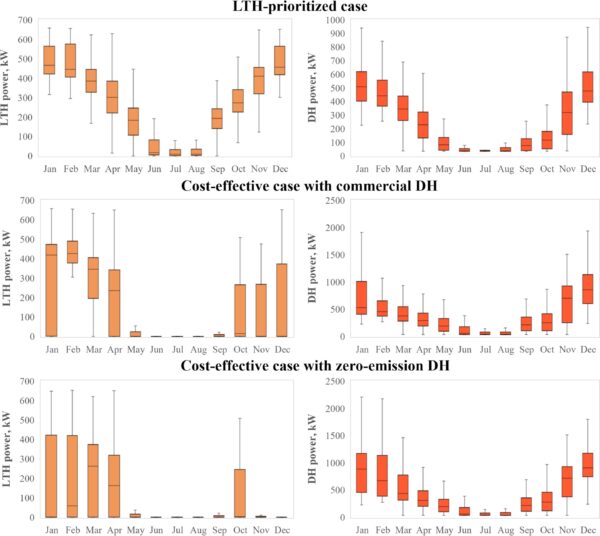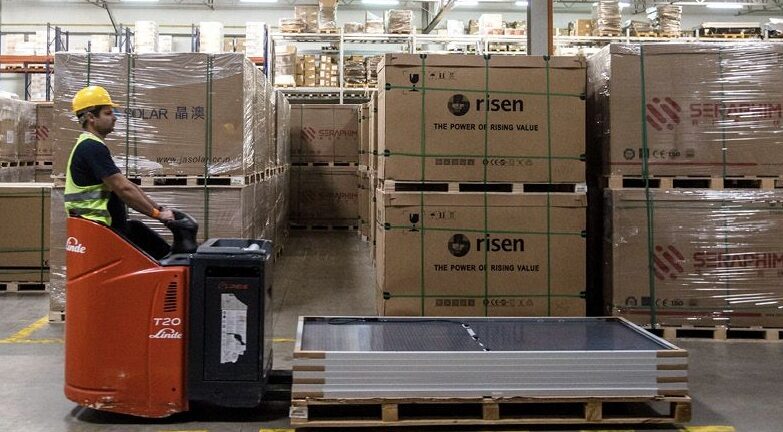A research group led by scientists from Finland's Aalto University has analyzed the impact of two control strategies on energy usage and costs in a small energy community. The system comprises a low-temperature heating network powered by a dual-source heat pump (DSHP) and a district heating network. The first control strategy prioritizes the heat pump use, while the second prioritizes price.
The energy community is located at Aalto campus, Espoo, Finland and consists of five educational buildings with domestic hot water (DHW), space, and ventilation heating demand, with the buildings being connected to a hybrid heating system, comprising a low-temperature heating (LTH) network and a district heating network.
The LTH network is driven by a DSHP using both waste heat and condensing heat of cooling from a laboratory and ambient air as the heat sources.
The total floor area of the buildings is around 30,000 m2, and the occupancy rate is standard at 17 m2 per person. All the buildings are continuously heated to 21 C. The DSHP uses both ambient air and waste heat when the outdoor temperature is above -12 C. When the temperature drops below – 12 C, it only uses waste heat. Waste heat comes from a laboratory on campus with a 200 kW cooling system.
“The study utilized the dynamic simulation software IDA ICE 5.0 to model the individual buildings and the hybrid heating network,” explained the academics. “The weather data files applied in the simulations were customized with the hourly weather data measured at the nearest weather station belonging to the Finnish Meteorological Institute for different years. The weather data of 2019 was used in the building model validation, while those of 2022 and 2023 were for further dynamic simulations of the small energy community.”

Image: Aalto University, Energy and Buildings, CC BY 4.0
The two control strategies were tested in the simulation. In the LTH-prioritized control strategy, the DSHP is used all the time, while the district heating only kicks in when the heat pump is insufficient. On the other side, the cost-effective control strategy compares the cost of using DSHP – with its electricity prices and coefficient – to the prices of the district heating and its efficiency. The cheaper option is always preferred.
The cost-effective strategy was simulated in two configurations: the first, based on district heating prices on the commercial levels; the second, utilized zero-emission heating from waste heat, with an annual price estimate of 55.8 € ($60.24)/MWh. The LTH-prioritized case, the cost-effective case with commercial district heating, and the cost-effective case with zero-emission district heating were all tested on 2022 and 2023 weather and prices.
“Compared with the low-temperature heating-prioritized case, the total costs were reduced by 10% or 25% in the cost-effective cases with commercial or zero-emission district heating for 2022,” the results showed. “However, in 2023, the cost-effective control strategy based on hourly electricity price and monthly commercial district heat price even increased the total costs by 5%, while the cost-saving potential of the cost-effective control strategy based on hourly electricity price and zero-emission district heat price was limited to 5%.”
The team explained the difference between 2022 and 2023 in changing power fee charging policies. “As price differences between electricity and district heating in 2023 were less than those in 2022, the drop in energy costs upon adopting the cost-effective control strategy was smaller in 2023. The increased power fee cost weakened the positive impact of energy cost saving brought by the cost-effective control strategies in the total costs,” they highlighted.
Their work was presented in “Cost-optimal control for a small energy community heated with dual source heat pump and district heating,” published in Energy and Buildings. The research was conducted by scientists from Finland's Aalto University, Lappeenranta-Lahti University of Technology, the Netherlands' Eindhoven University of Technology, and China's Nanjing Tech University.
This content is protected by copyright and may not be reused. If you want to cooperate with us and would like to reuse some of our content, please contact: editors@pv-magazine.com.



By submitting this form you agree to pv magazine using your data for the purposes of publishing your comment.
Your personal data will only be disclosed or otherwise transmitted to third parties for the purposes of spam filtering or if this is necessary for technical maintenance of the website. Any other transfer to third parties will not take place unless this is justified on the basis of applicable data protection regulations or if pv magazine is legally obliged to do so.
You may revoke this consent at any time with effect for the future, in which case your personal data will be deleted immediately. Otherwise, your data will be deleted if pv magazine has processed your request or the purpose of data storage is fulfilled.
Further information on data privacy can be found in our Data Protection Policy.